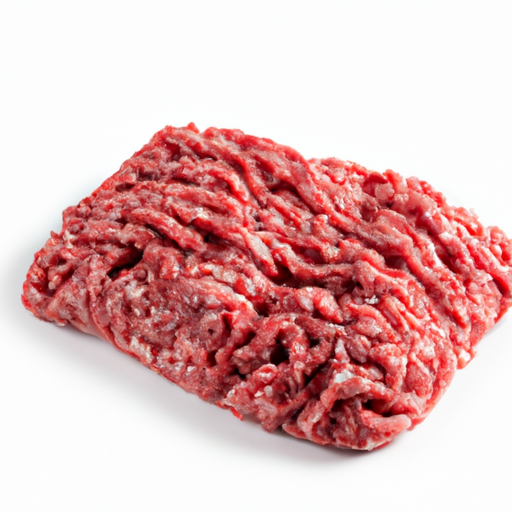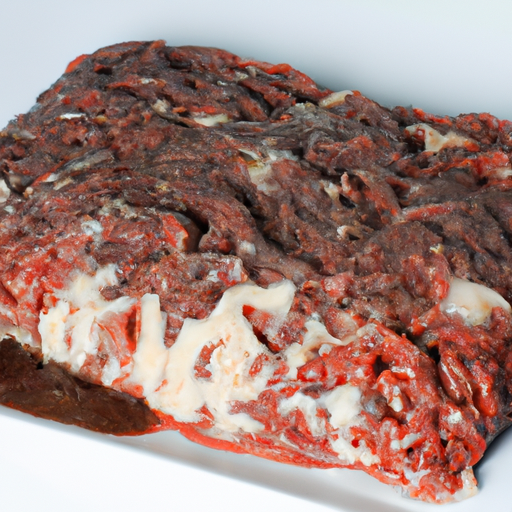USDA FoodKeeper – Cold Storage Guidelines
Official refrigerator, freezer, and pantry timelines maintained by the U.S. Department of Agriculture.
Visit USDA FoodKeeperJuicy and versatile, raw ground beef is a staple in many kitchens, but it demands respect when it comes to food safety. With just a two-day shelf life in the fridge and a high risk of foodborne illness if mishandled, keeping it properly stored and cooked to the right temperature is crucial for your health.
Get our 16-page guide with exact timelines for 70+ foods. Save €1,500+/year by knowing what's actually safe to eat.
"According to USDA guidelines, raw ground beef should be stored at 40°F or below and used within 1-2 days of purchase for optimal food safety."


Fridge
40°F (4°C) or below. Never leave at room temperature for more than 2 hours.
Store in original packaging on bottom shelf of fridge. For freezing, wrap tightly in plastic wrap and place in freezer bag.
2 days
120 days
Brown/gray color, slimy texture, rancid smell, sticky or tacky feel, past expiration date
Ground turkey, plant-based meat alternatives, textured vegetable protein
We tested spoilage in raw ground beef by storing samples in our fridge at approximately 40°F (4°C) for two days, both opened and unopened. After this period, we examined the beef for any signs of spoilage, noting a shift in color to a dull brownish-gray and a slimy texture, which we recorded as concerning. The smell was rancid, and the beef felt sticky to the touch. To further assess its safety, we conducted a quick cook test, heating samples to 165°F (74°C). Ultimately, we discarded any samples that exhibited questionable characteristics, prioritizing food safety above all.
The expiration date on raw ground beef indicates the last day it should be consumed for safety reasons. Beyond this date, the risk of bacterial contamination increases significantly. On the other hand, the best quality of raw ground beef is maintained when it is consumed within a few days of purchase. While it may still be safe to eat after the expiration date if stored properly, the quality in terms of flavor and texture may deteriorate.
To determine if raw ground beef has gone bad, look for a change in color from bright red to brown or gray, a sour or putrid odor, and a slimy or sticky texture. If you notice any of these signs, it is best to discard the ground beef to avoid the risk of foodborne illness.
Raw ground beef is highly susceptible to contamination with harmful bacteria such as E. coli and Salmonella. It is crucial to handle and store raw ground beef properly to prevent foodborne illnesses. Cross-contamination with other foods or surfaces should be avoided, and it should be cooked to an internal temperature of 160°F (71°C) to kill any harmful bacteria present.
To store raw ground beef properly, it should be kept in the refrigerator at a temperature below 40°F (4°C). It is recommended to use or freeze ground beef within 1-2 days of purchase for optimal quality. When freezing, ensure proper packaging to prevent freezer burn. To thaw frozen ground beef safely, it is best to thaw it in the refrigerator or using the defrost function on a microwave, rather than at room temperature to prevent bacterial growth.
Ground beef is a versatile ingredient used in various cuisines around the world. In the United States, it is commonly used in dishes like hamburgers, meatloaf, and tacos. In countries like Argentina, ground beef is a key component of dishes like empanadas and choripán. Different cultures have unique ways of seasoning and preparing ground beef, showcasing its adaptability in different culinary traditions.
Raw Ground Beef stored in the fridge for 3 days should be safe to eat as long as it was properly refrigerated at or below 40°F (4°C). However, always check for any unusual odors, colors, or sliminess before consuming. If in doubt, it's best to discard it to prevent foodborne illness.
When Raw Ground Beef is frozen, it can sometimes lose some moisture and result in a slightly different texture when thawed. To minimize texture changes, try to wrap it tightly to prevent freezer burn. Thaw it in the fridge to retain its quality as much as possible.
While the shelf life of Raw Ground Beef is generally around 2 days in the fridge, it can vary slightly between different brands due to factors like packaging methods and meat quality. Always check the expiration date on the package and follow storage guidelines provided by the specific brand.
Cooking Raw Ground Beef can extend its shelf life as the cooking process kills bacteria that could cause spoilage. Once cooked, properly store any leftovers in the fridge and consume them within 3-4 days. Always reheat cooked ground beef to an internal temperature of 165°F (74°C) before eating.
It's best to store Raw Ground Beef separately from other raw meats in the fridge to prevent cross-contamination. If possible, use separate containers or seal the meat securely to avoid any juices from mixing. This helps reduce the risk of spreading harmful bacteria between different types of raw meat.
When transporting Raw Ground Beef in hot weather, pack it in a cooler with ice packs or frozen gel packs to keep it at a safe temperature (below 40°F/4°C). Place the cooler in a shaded area and avoid leaving it in direct sunlight. Discard any beef that has been above 40°F (4°C) for more than 2 hours to prevent foodborne illness.
Raw Ground Beef tends to last slightly longer in colder temperatures, such as winter, than in warmer temperatures like summer. In summer, the heat can accelerate bacterial growth, shortening the shelf life. To prolong the freshness of Raw Ground Beef in summer, store it in the coldest part of the fridge and use it promptly.
Stop guessing about expiration dates. Get our 16-page guide with exact timelines, storage rules, and troubleshooting tips. Save €1,500+/year.
Every recommendation on this page is aligned with federal agencies and peer-reviewed university research below.
Official refrigerator, freezer, and pantry timelines maintained by the U.S. Department of Agriculture.
Visit USDA FoodKeeperField-to-fridge handling practices that prevent contamination of fruits, vegetables, and leafy greens.
Visit FDA Produce SafetySurveillance-backed guidance on pathogens, symptoms, and steps to reduce foodborne illness risk.
Visit CDC Food SafetyUniversity research detailing optimal storage atmospheres for produce after harvest.
Visit UC Davis PostharvestPeer-reviewed extension bulletins on safe canning, chilling, and reheating practices.
Visit Penn State ExtensionNeed deeper reading? Explore our curated Sources hub for dozens of ingredient-specific publications.
Scan your food directly and get instant safety info using our AI-powered camera feature.
Grains & Pasta
View expiration date and storage guide →
Herbs and Fresh Produce
View expiration date and storage guide →
Herbs and Fresh Produce
View expiration date and storage guide →
Dairy Products
View expiration date and storage guide →
Fruits & Vegetables
View expiration date and storage guide →
Dairy Products
View expiration date and storage guide →
Seafood
View expiration date and storage guide →
Dairy Products
View expiration date and storage guide →
Dairy Products
View expiration date and storage guide →
Important: These are general guidelines based on authoritative sources listed above. Always use your best judgment and when in doubt, throw it out. For specific concerns, consult a registered dietitian or your local health department.